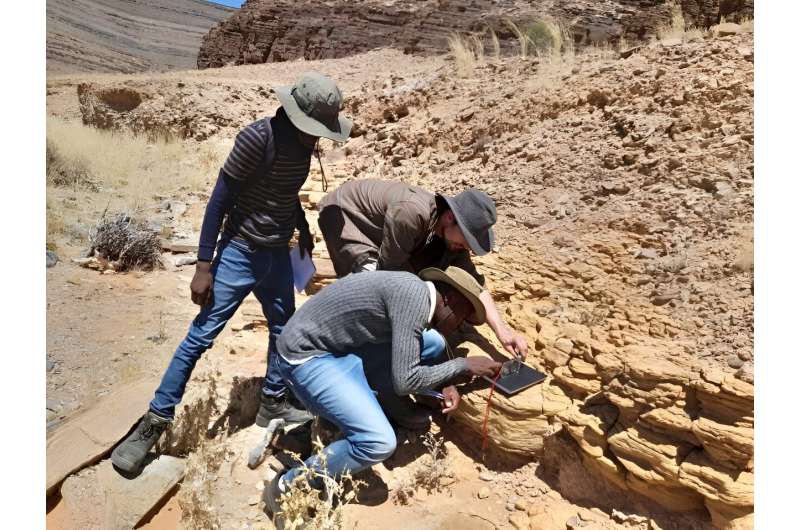This article has been reviewed according to Science X's editorial process and policies. Editors have highlighted the following attributes while ensuring the content's credibility:
fact-checked
peer-reviewed publication
trusted source
proofread
Sea level changes shaped early life on Earth, fossils show

A newly developed timeline of early animal fossils reveals a link between sea levels, changes in marine oxygen, and the appearance of the earliest ancestors of present-day animals.
The study, published in Science Advances, reveals clues into the forces that drove the evolution of the earliest organisms, from which all major animal groups descended.
Ancient fossils
A team from the University of Edinburgh studied a compilation of rocks and fossils from the so-called Ediacaran-Cambrian interval—a slice of time 580–510 million years ago. This period witnessed an explosion of biodiversity according to fossil records, the causes of which have baffled scientists since Charles Darwin.
The early animals found from this era were all sea-dwellers, at a time when oxygen levels in the air and ocean were much lower than today.
While the very first lifeforms before this time were mostly single-cell and simple multi-celled organisms, creatures in the Ediacaran Period started to become more complex, with multiple cells organized into body plans that allowed them to feed, reproduce, and move across the ocean floor.
This era also marked the emergence of so-called bilaterian animals—which display symmetrical body plans, in common with most present-day species including humans.
Biodiversity timeline
By compiling data from different sources—including radioactive dating and geochemical information about the layers of rock in which fossils were found—the team mapped all major fossil finds and various environmental datasets onto a single timeline.
The new chronology allowed the team to study trends in biodiversity for the period in question with more detail than before.
They combined these insights with further chemical clues from the geological record—confirming a link between major changes in global sea levels, intervals when shallow marine environments gained more oxygen, and the appearance and diversification of early animal groups.
This dynamic set the stage for several significant bursts in biological diversity, known as the Avalon, White Sea, and Cambrian assemblages, each marking the arrival of new animal groups and the decline of others.
By reconstructing environmental conditions in deepest time, the study unlocks new insights into the ancient forces and pressures that shaped the earliest life on our planet.
The team also identified gaps in the fossil record, suggesting that current knowledge about early animals is biased by the clusters of sites worldwide where fossils have been found and studied.
"Constructing a timescale of early animal evolution using the rock record is a daunting task, only made possible through international and interdisciplinary research. But an integrated global approach is crucial. It exposes biases in our records, while also revealing patterns in fossil appearances, sea level cycles, and environmental oxygen," says Dr. Fred Bowyer.
"Knowing what drives biodiversity is a fundamental piece of knowledge in the puzzle of life. I feel very privileged to have built upon decades of interdisciplinary global research, and contributed to a better understanding of the role that sea level plays in early animal evolution," says Mariana Yilales Agelvis.
More information: Fred T. Bowyer et al, Sea level controls on Ediacaran-Cambrian animal radiations, Science Advances (2024). DOI: 10.1126/sciadv.ado6462
Journal information: Science Advances
Provided by University of Edinburgh




















